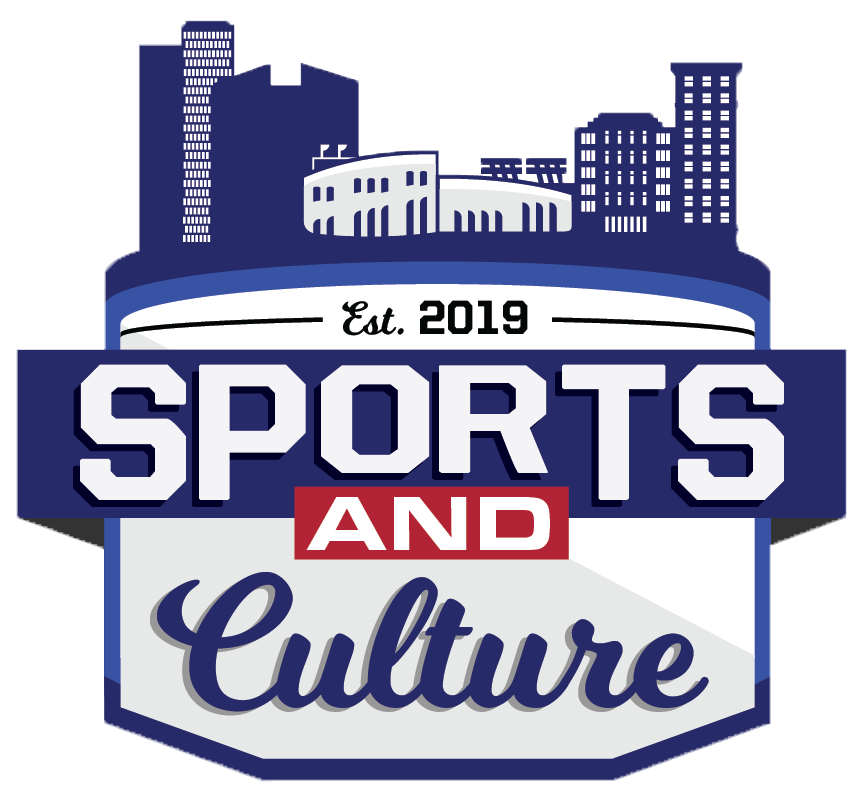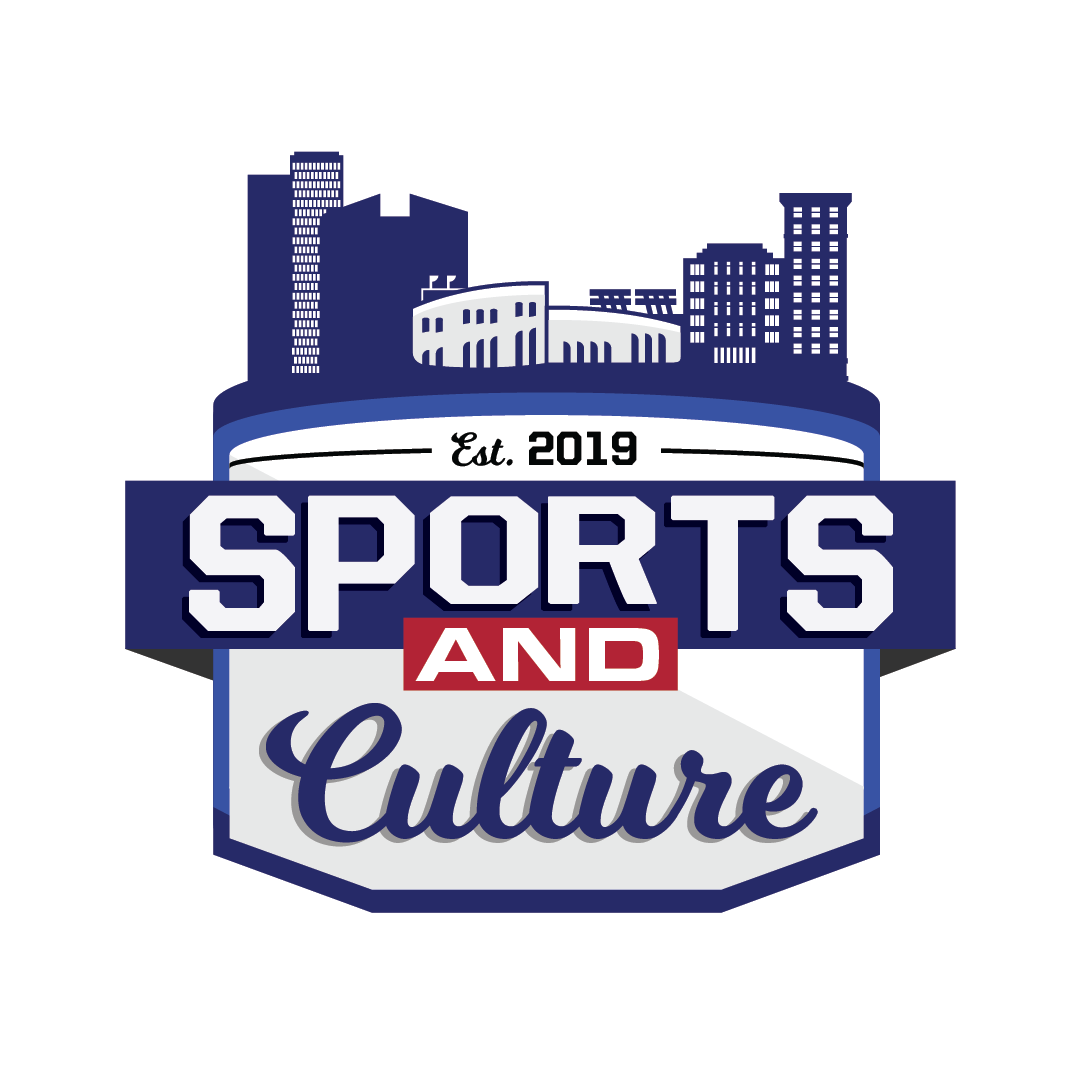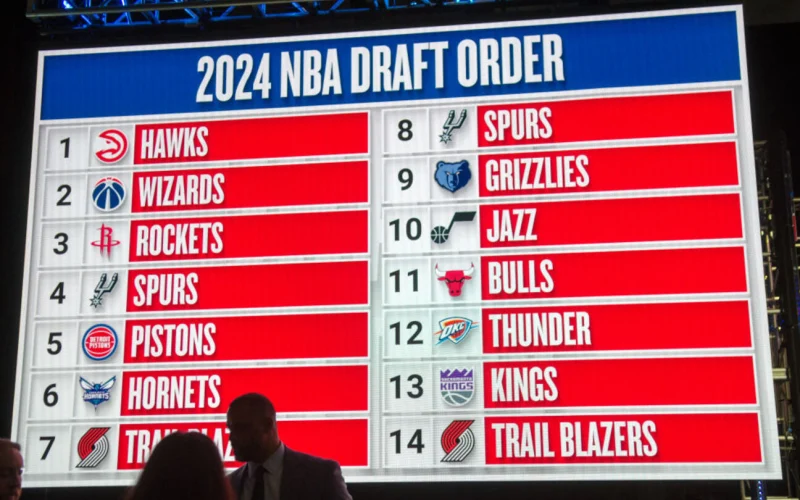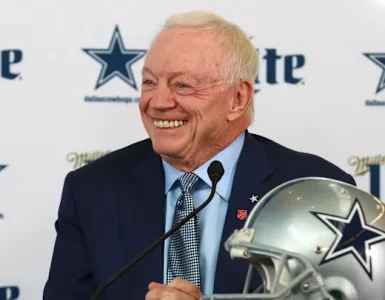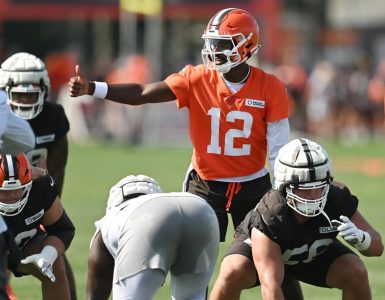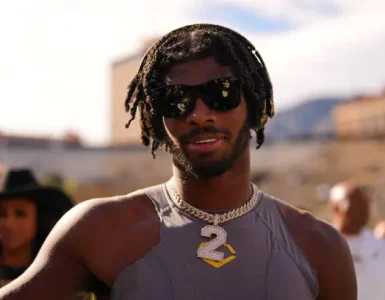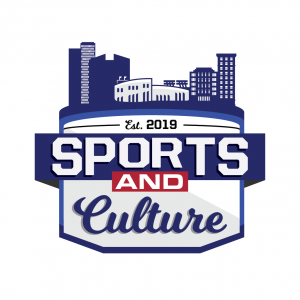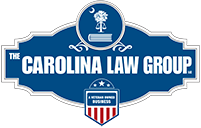
ESPN NBA Front Office Insider Bobby Marks and ESPN NBA Draft Analyst Jeremy Woo answered questions on Monday to preview the 2024 NBA Draft Presented by State Farm, which tips off on ESPN and ABC this Wednesday, June 26 and continues with the second round on Thursday, June 27 on ESPN.
Q. This is for both of you. Two questions: One is Cam Christie from Minnesota. What is his draft prospects? Some people feel that maybe he came out a little too early. And also, what do you think the Minnesota Timberwolves need to do or should look at in the Draft this year?
WOO: I can take the Cam question. I think he’s in an interesting spot. I think his range is in the late first to early second.
I think it’s an interesting case because with any of these guys who were freshmen who decided to turn pro, the financial aspect now of NIL and going back, profitability-wise, it’s comparable potentially.
I think the key for him will be landing in a situation where he can develop and a place he feels good that will sort of invest in him and give him the time to improve. He may need to go to the D league to get the playing time he needs.
But I think it really just comes down to sort of short-term finances versus long-term development for a player like Cam. And then, Bobby, did you want to speak to Minnesota?
MARKS: I just think that this is probably, certainly Minnesota and some other teams here, this is kind of their free agency, where they are salary-wise, where they are with some of these restrictions, the inability to add to the roster. They’ve got two big free agents with Kyle Anderson and Monte Morris. To keep them, certainly, comes with a significant penalty.
So, I think you’re probably looking at guard, probably some wing depth, if you can get it there. You also drafted Wendell Moore two years ago who hasn’t really worked out for you. Maybe there’s a change in scenery for him.
But I do think — as I said, you’re kind of looking at depth because there is a possibility that you might lose those key free agents because you’re going to get priced out to retain them.
Q. Couple UConn questions real quick. Donovan Clingan, do you think he could go number one? And what impact could he have right away for his new team? And Cam Spencer, where do you guys see him going? And he’s a little older, he’s 24, can he help an NBA team with his shooting?
WOO: I can take those. I think Donovan is in the mix at number one. I think more of what has been coming out in the last few days has been more Risacher for Atlanta. I think if they trade back, I think he’ll be in the mix.
But I think it will be interesting with Donovan, if he does start to fall past the first couple of picks which maybe what happens, then number three, number four, I think he’s a guy a lot of teams are interested in potentially coming up to acquire.
So, what happens with him will be interesting in terms of trades, how far he can fall, which I don’t think will be too far. But we’ll see.
And I think he’s the top rim protector in the Draft. It will take a little bit of time. You hope you get the version of him they got in the tournament where he’s in great shape and healthy and you want to be able to prolong that. But he showed what he can be defensively when he’s full go. So, I think that’s a big thing. And then just continuing to give them opportunity to improve as a passer and offensively.
Q. Doesn’t sound like you think he’ll go number one?
WOO: Right now, I don’t think so. But surprises have happened. You know this.
And with Cam, I do expect he’ll get drafted in the second round. I think teams love his toughness, his shooting ability, just doing it on a big stage, winning team, can go a long way. And I think he’s proven that.
I think ideally for him he lands on a team where it’s a competitive team that needs a cost-controlled guy like that who can step in give them some minutes and shoot. That’s what his role hopefully will be.
MARKS: That’s the beauty of the second round. I think a lot of people get caught up in where they go whether it’s 31, 45 or 58. Really the second round is just about finding what team fits for you the best.
So, you have the choice. You have the choice of do you want a three- or four-year guy that can maybe he can help you, maybe he can come off your bench next year. Or are you in a position where you’re taking a freshman that maybe fell through the cracks and has got maybe more of an upside developmental but maybe you have to wait two years? That’s kind of like the two different directions you go there.
Q. Two teams in particular such as the Grizzlies and Oklahoma City Thunder, one of the two teams that are looking to add some size. Donovan Clingan has been looked by both teams if either team decides to pick him or trade for him. What do you feel the fit is for either team?
WOO: I think personnel-wise, and Bobby can probably speak to the value of having him on a rookie deal as well, but I think personnel-wise you can look at both Memphis and Oklahoma City, you see Jaren Jackson and Chet Holmgren, and they’re both good shot blockers and great defensive players, but they’re both kind of skinny, slender guys.
So, I think if you look around the league, there are a lot of traditional, so to speak, or just stronger bigs that you have to deal with depending on the match-up.
So, having a guy like that, I think that’s part of why Donovan is so attractive, who can protect the paint, potentially step out and shoot a 3. I think it’s the idea of complement to either of those guys on a team. And I think you can see it on paper why that fit makes sense.
MARKS: I think certainly where both those teams are, Memphis at 9 and OKC at 12, it’s going to cost you to move up to get him. Like the likelihood he’s not falling, he’s definitely probably not falling to 9. If he does, he’s not getting to 12. I think that is probably a pretty good bet there.
It’s a matter of certainly Memphis got all their draft picks to move up, if they want to do that. We know Oklahoma City has been sitting on all these picks also. OKC in the past has been active, moving up in the Draft, moving back in the Draft. We saw last year they moved back two spots to get Cason Wallace. A few years ago, Ousmane Dieng. They traded a couple firsts for him. They do have the equity if they wanted to get into the top three, top four, if he’s still there.
Q. Bobby, you referenced it a little bit with Memphis in the financial situation. Just wanted to know how much do you think Luke Kennard’s team option factors into what the Grizzlies can do from a financial outlook perspective on Draft night moving up and down the board?
MARKS: It’s interesting how — Kennard has that 14 and a half million-dollar team option. You exercise it you’re in the apron. That’s the reality of it. It limits what you can do. But you have a whole year to get out of it. You don’t have to get out until basically kind of next June here.
So, that’s on one end. But then there’s also the value of the player that you could maybe use in a trade. So, I think we get caught up in the financial aspect of it when we hear apron and luxury tax, it’s the bugaboo. But you still have a good player.
I think that certainly comes into play. I think how the apron rules are, even if you’re not in it right now, how the league looks at it is where your salary is if you want to make a transaction the night of the Draft, where it is as of July 1st.
If Memphis is an apron team, they won’t be able to go out and buy a pick in the second round. They won’t be able to do some of the other restrictions they would be able to do here unless that team option is declined here.
So, it certainly could go one or two ways. I would not be surprised if that option is exercised, and he’s brought back just because he has value on an expiring contract.
Q. Jeremy, Grizzlies GM Zach Kleiman, he basically said that the Grizzlies are going to get a big at some point, whether it’s the Draft, free agency, whenever it is. They’re picking ninth right now. And as your board and other boards have showcased, that kind of feels like an in-between spot to get a big. With the Grizzlies’ current draft position at nine, how do you see them being able to address the need for a big in that spot?
WOO: Absolutely. We spoke a little bit about Clingan’s fit there, if he does end up falling to a point where they’re able to maybe move up to get him. I think that would be attractive. But I think also they have to know, there are a lot of teams calling, I believe, about number three, number four. Teams are trying to trade up.
So, if that’s not available, how do you leverage the Draft in other ways to kind of address that need? Whether that be needing to look into trading back from nine to further back where you can still get a big you like who is younger.
There are a handful of guys sort of in that range, sort of in the teens — I would say the 14, 15, 25 range who will go, centers.
And also, there’s the second round. They have number 39. That’s a pick they might be able to leverage, maybe to add depth, if there’s a big, they can go get using that pick at that spot.
So, I think there are a couple of different avenues. But also, with where they are, you’re finding a rookie and expecting that rookie to play a lot of minutes on a playoff-caliber team in this draft might be a stretch. If they can’t get Clingan I think they’ll be thrifty and look at other means of doing that.
Q. Just interested in knowing what’s the most common strategy for teams choosing with the last pick in the Draft? And the Mavericks’ case, since they went to the NBA Finals, how can a team improve from that spot? I know the latest mock draft shows Trentyn Flowers from Australia has an option. But what should they do with 58?
WOO: I think the toughest thing about 58 is that you get to the point that late in the Draft, there are players who would prefer to go undrafted and be able to pick their own destination.
Even the Mavericks, say, it might even advantage them. They might want to sign someone to a contract they want without that pick. So, I think you look at maybe stashing, taking somebody who will take a stash.
That pick becomes something you can trade, gives you a chip of some kind. And then you treat undrafted free agency sort of as more of a priority in terms of adding players. I don’t know, Bobby, if you want to speak to that, but that’s what I think.
MARKS: Still, you’re still going in the process and you’re in a holding pattern. As Jeremy said, there’s probably the priority when you get towards later in the first is that guys would rather go undrafted to kind of pick their team. I do think Dallas is in a good spot where they are. Certainly, we only have a couple free agents here.
I think the process, you’re basically working off two boards. You’re working off the board where is 58 a guy you want to sign to your second-round pick exception? So that’s a three or four-year contract. And the other board who are the two or three two-way guys? Who are the guys who go undrafted? Who are our priority guys?
I think for Dallas to move up in the Draft, I think, presents a challenge, just based on you basically only have 25 and 31 as far as your firsts. You’re limited with your seconds. You don’t want to send cash in the deal because you would hard cap yourself. You want to sign Derrick Jones, which is a priority. So, adding all that up, as Jeremy said, you’re basically kind of in a little bit of a holding pattern.
If they stay there, they’ll draft somebody. But the likelihood is players usually at 58 are usually on a two-way contract. But it is also an inexpensive contract that you could have for the next three or four years.
Q. Reference to couple guys Ron Holland and Ja’Kobe Walter, we expect them to go pretty early in the Draft. How do you expect their game to translate to the NBA?
WOO: I think Ron, obviously he had a very productive year in the G League. I think physically and motor wise, how hard he plays has always been appealing from a scouting perspective. I think we did see he was the guy who was in the mix at number one coming into the season. Teams kind of cooled off on that thought a little bit, which is probably going to be reflective. He’s more of a probably mid to late lottery guy at this point.
But I think continuing to refine his shooting is going to make a difference. Frankly, I think it will help landing on a team where he’s not asked maybe to do as much as he was. Ignite gave him a lot to do and let him kind of playmaker and stretch that usage to the limits. I think ideally, you’re not having him do that to that extent in the NBA.
So, I think ideally, he lands somewhere, sort of let him get back to the defensive play making, that type of role that he played in high school and kind of meld those two things as he develops.
And Ja’Kobe, I think, is in that — I would guess — 10 to 20 range. He’s gotten looks higher than that. I think teams really like who he is as a person. His intangibles are — his work ethic. That comes up a lot when you talk to people about Ja’Kobe.
I think his freshman year was solid. I think there’s room for improvement as a shooter. I think the fact he doesn’t create a ton of his own offense or for others with the ball probably affects how teams view his upside. But he kind of fits the 3 and D profile. And he’s young and people trust him as a guy. So, I think it ultimately bodes well for him long term.
Q. Bobby, there’s a lot of buzz about Folgers (phonetic) ultimately facilitating a trade, mentioned the Knicks as a potential suitor. With the Knicks roster becoming expensive, how do you see Folgers (phonetic) landing in New York from the financial standpoint? And would you do it if you’re the Knicks? For Jeremy, the Knicks had success in their current (indiscernible) from IQ and Grimes in the past. If they hold onto one of those bigs, who should be their big?
MARKS: Listen, if Paul George becomes a free agent, I think it presents highly unlikely that New York would be able to get him in a sign and trade, just because of the rules where they basically hard capped at the first apron. And want to bring OG back and Isaiah Hartenstein.
Even if you were moving off salary where they’re heading, their finances get pretty high. I think that presents a challenge.
I think certainly if he opted in his contract, it makes it more flexible. But as you know, when you take back more money in a trade, it hard caps you also.
It’s kind of like you’re working on two different — you have the Draft equity if you wanted to do that. Certainly, the player dictates if that’s what he wants to do.
You have, whether it be Randle or Bogdanovic, those are your two big contracts. That gets you to $46, $47 million. Paul George makes $49 million here. Then it comes out to math. What’s OG’s number going to be in free agency? We kind of know what Hartenstein is going to be. And it’s kind of filling everything in under that threshold here.
So that’s the economics of the NBA side of it from a — certainly you could talk from a fit. And the other end, are you comfortable paying a guy who is going to be 37 years old in his last year $61 million when you’ve got to pay Jalen Brunson again?
It’s not just about now. It’s kind of like big picture here. So, I think Paul’s got a decision to make by the 29th. We kind of know who the cap-spaced teams are.
As I’ve said all along, I think if he does opt in to his contract, I think that would certainly signal the ability to work out a trade, because the Clippers have had almost a full year to extend him. So that’s kind of my two cents on the Knicks.
WOO: I guess to your question about the Draft, assuming they keep at least one of those picks in the 20s, I think if you look at — I think they’ve done a good job drafting the last couple of years. I think they value guys who guard.
Obviously playing for [Tom Thibodeau], it takes a certain type of guy to be able to handle those demands. I think finding guys who can help and play minutes next season to kind of get through the grind of a season. Ideally, it’s someone who can help you.
But the Draft is interesting. I think there’s some interesting guys who might slide. You never know who it’s going to be.
But I think getting a guy, whether it’s a Terrence Shannon or a Ryan Dunn or like sort of a guy you can develop but also gives you something defensively right away. If a guy like, for example, Isaiah Collier were to fall, that would be an interesting value swing, to get a guy who was highly regarded like that if he does fall in the 20s who could be available.
So, I think they’re in a spot to kind of just see who falls, because I do think there are going to be trades in front of them. I think there’s some uncertainty in terms of what will happen between 15 and 24. Those are some names. But kind of have to see who ends up falling for them.
Q. I’m curious where you see Bronny James falling? Jeremy, I saw you had him picked 55th by the Lakers. And it’s reported that the Lakers and the Suns are the only teams who have worked him out. Curious where do you see him — maybe other than that 55th pick? And if there’s any other teams you would have in mind who could pick them up?
WOO: Well, I would point to — you know what, Jonathan Givony, our colleague, reported last week about Bronny. Clearly, they’re being targeted with where he works out and what they view the landing spots being. I think there’s a level of comfort with that, which probably tells you something.
I know Rich Paul has said they don’t want to take a two-way. They’d like to get Bronny on some type of guaranteed deal.
That unto itself is hard to get. Everybody wants to put everybody on a two-way for financial reasons. There are not a ton of teams wanting to commit roster slots in the second round, at least right away.
If the Lakers are one of those teams, and clearly, they sent them there for very obvious reasons; there’s a level of familiarity, I can see him being there and that being what they do.
But I think to the point, to the question, would someone ahead grab him. I think it’s a matter of, is it worth it? Is there someone you prefer in that spot, is it worth, like, I don’t think it’s the type of thing where the Lakers are going to be, oh, we’ll give you everything you want just to send him to us. If you take him higher, you take him higher.
To some extent they have some control over where he’s going to land. It may not be worth it if you don’t have access to him or don’t feel comfortable or whatnot ahead of the Lakers pick.
MARKS: I think there’s one part of you saying, well, we saw him in Chicago, we got his medical, we interviewed him; how much does the workout matter?
As Jeremy knows — I always joke about this — I never saw a game where he played three-on-three. How much does that take into account?
I do think the workouts matter when you get on the floor with your coaches and the coaches get more feel for that player here. I think it also comes with everything else that comes with it. Like, if you draft him, will he go to the G league? Will he sign a two-way contract? There’s a lot more to it.
Where do you see him from an upside standpoint? Where is he going to be two years from now? I’ve said it earlier, maybe there’s a player, a three-year guy that maybe you have a better comfort level for.
I think there’s a lot of different ways you can go about with Bronny there. There were 28 players last year drafted in the second round. There were 10 that signed two-way contracts. 15 signed regular standard contracts.
And I think one of the players out of the 28 that really made an impact was GG Jackson. So, in the scope of it, when you’re drafted in the second, usually you’re not getting a guy that can come in and impact right away. Certainly, there’s been Draymond and Jokic and guys like that, and Bronny is in a little different spot there.
Q. What are your thoughts on Boston at 30? Is this a good draft to have a first-round pick that you can trade out of or take? It’s such an unusual draft. Can any team do a 30? What kind of guys would be available at 30? Are you going to just have to take a young guy and hope or is there a veteran who might fall and help right away? What does Boston do at 30? And then obviously they have 54. So, I guess they could take Bronny James and blow everything up. What do you guys think at 30 and 54 for Boston?
WOO: Well, I think the upset — the narrative has been it’s sort of a weaker draft. But I think the real challenge is sort of at the top. Those are the teams that are trying to differentiate between these guys who are not that dissimilar in terms of projection. It’s kind of eye of the beholder at the top and sort of what your needs are. To me, it becomes very driven on what the circumstances are.
I think once you get to a certain point, sort of like mid to late first round and on, I think the depth of this draft is not bad. I would draw that distinction.
I think it’s like any other draft. There’s a mix of — at 30 there are always going to be younger guys, if you want to take the project route, there will be guys available to them there. If you wanted to swing on talent, that’s an option.
I think considering that they’re also in a window here competing for championships, if there’s an older player that they feel has a pathway to helping them off the bench next year, that might be something that you also look at 30.
And it’s obviously heavily dependent who falls. Boston is one of the teams that casts a wide net in terms of workouts; they try to bring everybody in and see.
I would think, if they do keep that pick, there will be a handful of guys that are attractive to them, whether it’s a developmental pick or maybe more experienced player who they think might be able to be an option next season.
Q. Bobby, even in terms of trading out, will they get offers if they’re not high on a pick in making this trade to the second round?
MARKS: I think it’s hard to recoup another first for 30 in this year’s draft. Even if it’s moderately protected. That’s hard for me to see. Like, does it make sense moving out 30 for multiple 2s in the future? I think it depends on what the team is.
Similarly, when I talked about Minnesota here — and I know Boston’s in a little different spot because you basically bring back your eight core guys under contract here — so as Jeremy said, you can go in different directions here.
Do you want to take a swing at somebody who maybe two years from now and Kristaps Porzingis becomes a free agent, and Al Horford eventually retires as their replacement because you won’t be able to get that in free agency when you’re paying Tatum and Brown and White and Holiday, the salaries there. Or you feel maybe Ryan Dunn from Virginia is at 30 still; we can get a big wing. You have a guy who is a perimeter defender, a guy who has experience and who can come in right now because this is like their free agency.
When you’re an apron team, the Draft is basically retaining your own players and adding through the Draft as far as outside of your own guys here.
The beauty of Boston — I’ve written and talked about it on TV, they’re different than these high-spending teams. They’re different than Phoenix and Minnesota and the Clippers and where they got all their picks. The only thing they owe is a 2029 first to Portland. So, you do have the flexibility there to build out your bench, and you can start certainly with Wednesday and Thursday night.
Q. With the resurgence of the WNBA, do you feel as this year’s draft class will lack any luster in terms of audience interest? And also, are there any players entering the Draft who are underrated who you feel will make a surprising impact?
WOO: I mean, I don’t think it’s a zero-sum game in terms of interest. I think it’s great that the WNBA is doing so well in terms of appeal. And the Draft is always its own thing. I think it’s two very different things. The Draft is two days.
I don’t see it as a conflicting audience question. To your question, I guess, about sleepers further down in the Draft, I think there’s some interesting guys.
We spoke about Cam Christie early. I think guys like him later on who are younger have interesting upside. And I’m trying to think of other second-round guys.
There are proven college guys in this draft who can play roles, like a Jaylon Tyson or Cam Spencer, these guys might be going second round, late first, but I think there’s going to be value.
And this just comes down to what you need and how you view it. The other thing I’ll say broadly — and teams have echoed this to me — a lot of these guys are very solid certainly in terms of intangibles off the court. People trust the work ethic.
There’s not a lot of guys with big concerns in terms of things that would impact their draft slot in terms of background. So, I think there’s a confidence level that guys will improve, and you can get a solid player to add to your organization. I think that’s another thing that I think helps.
